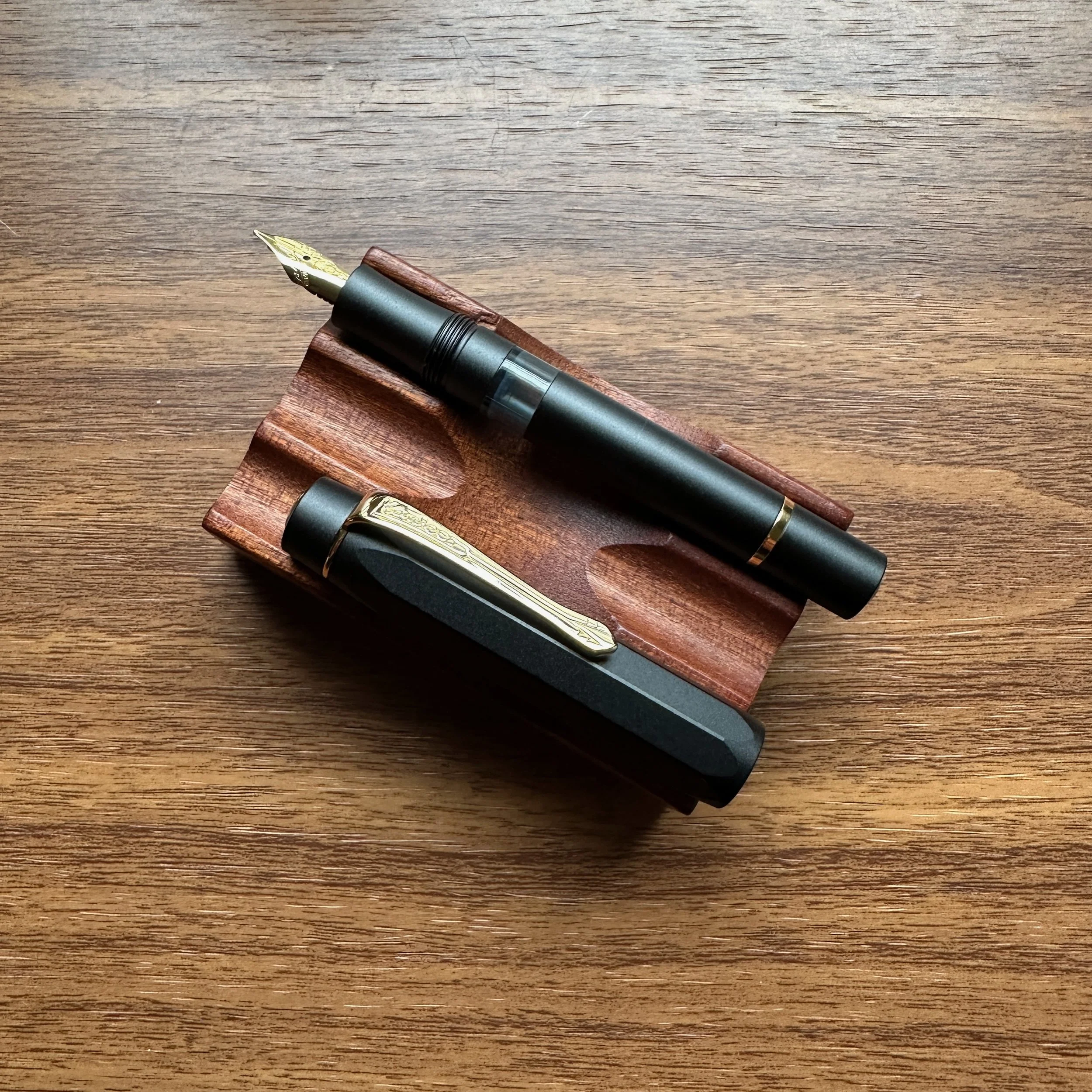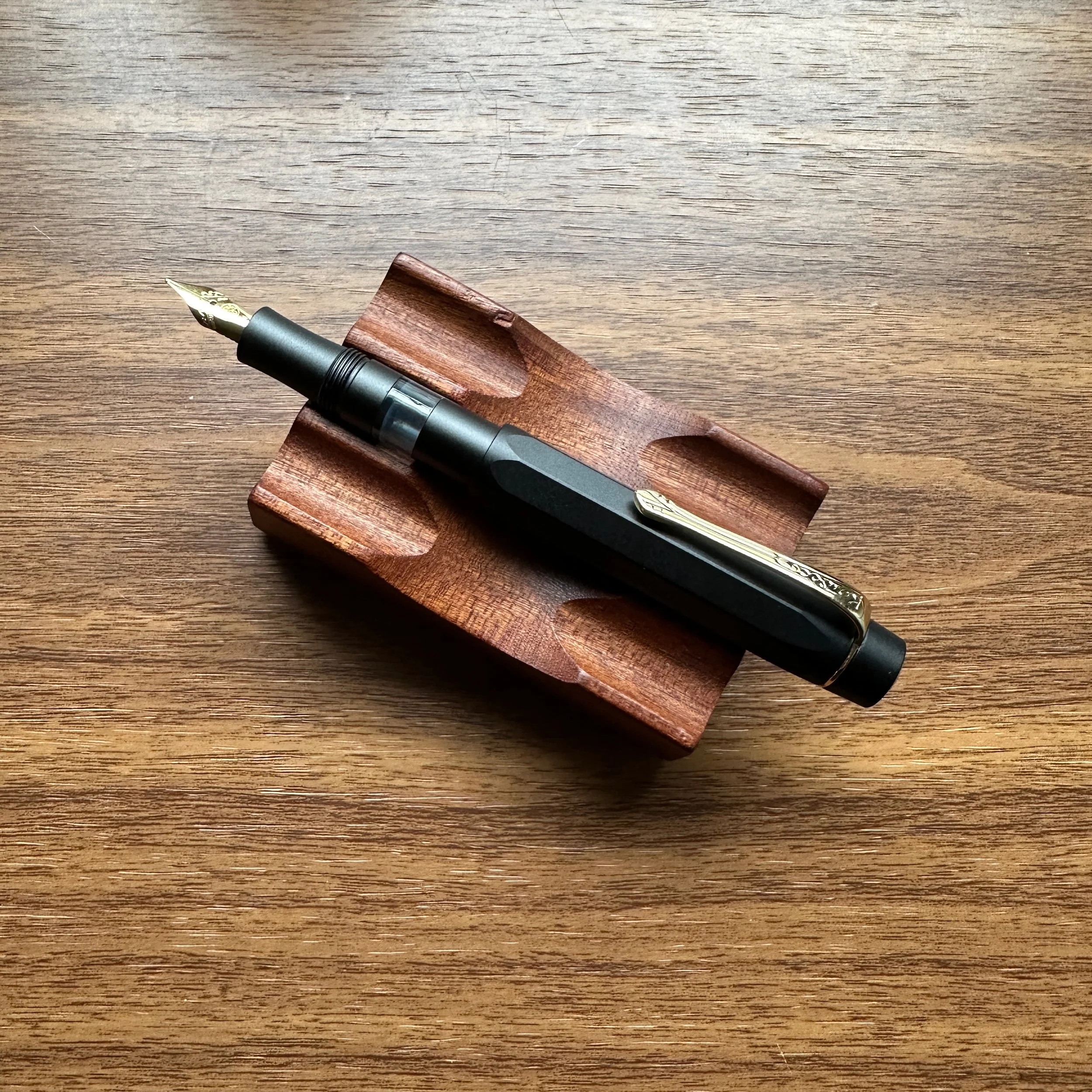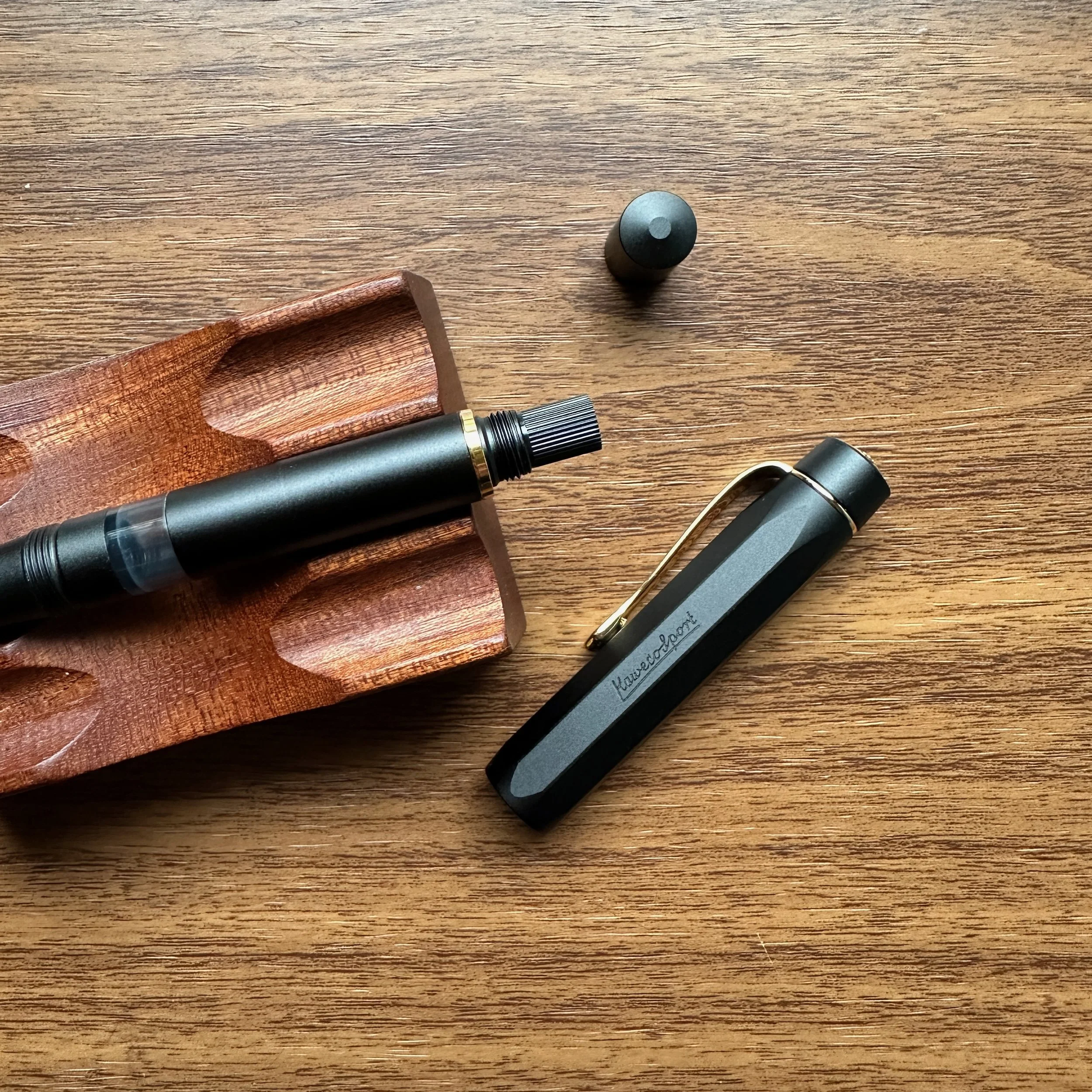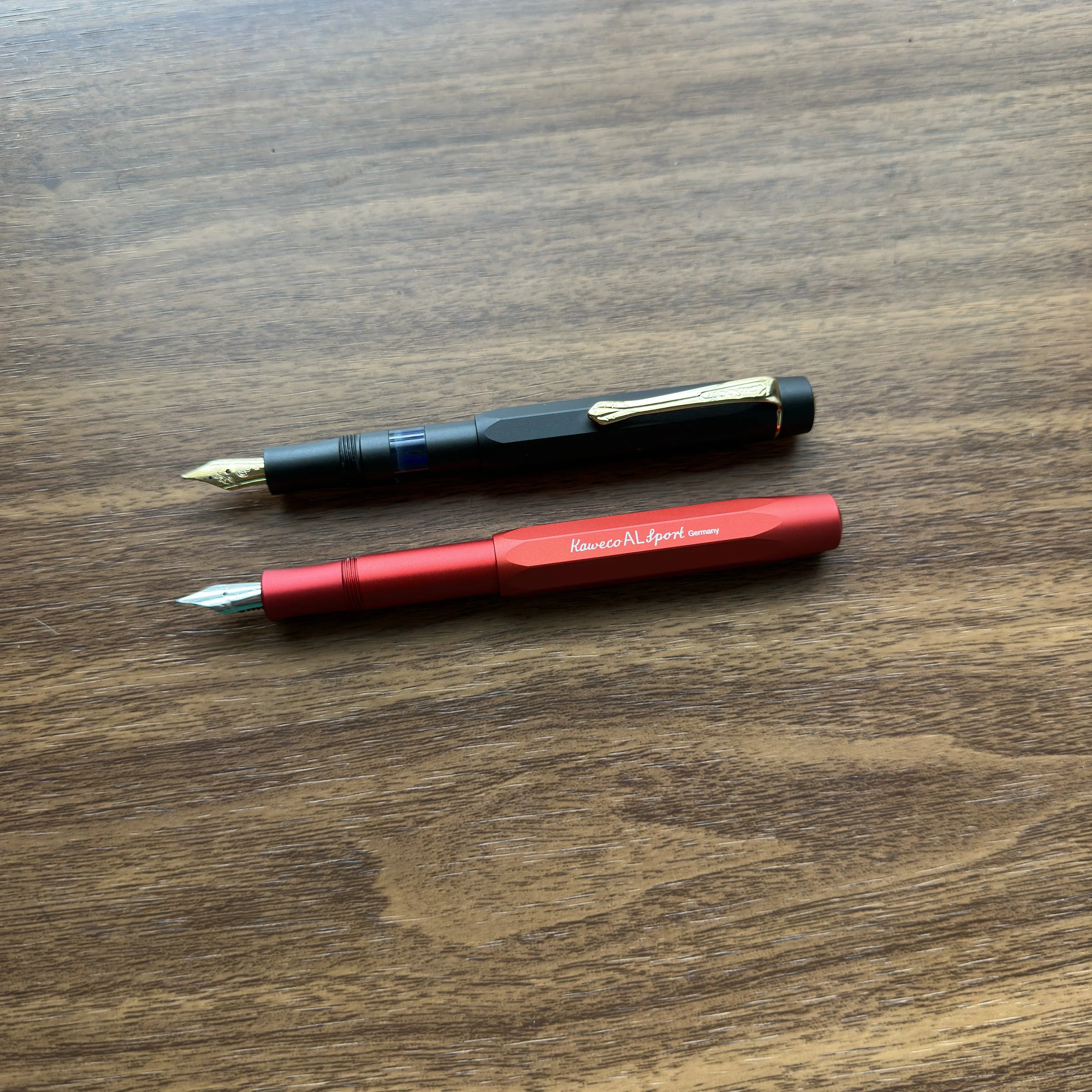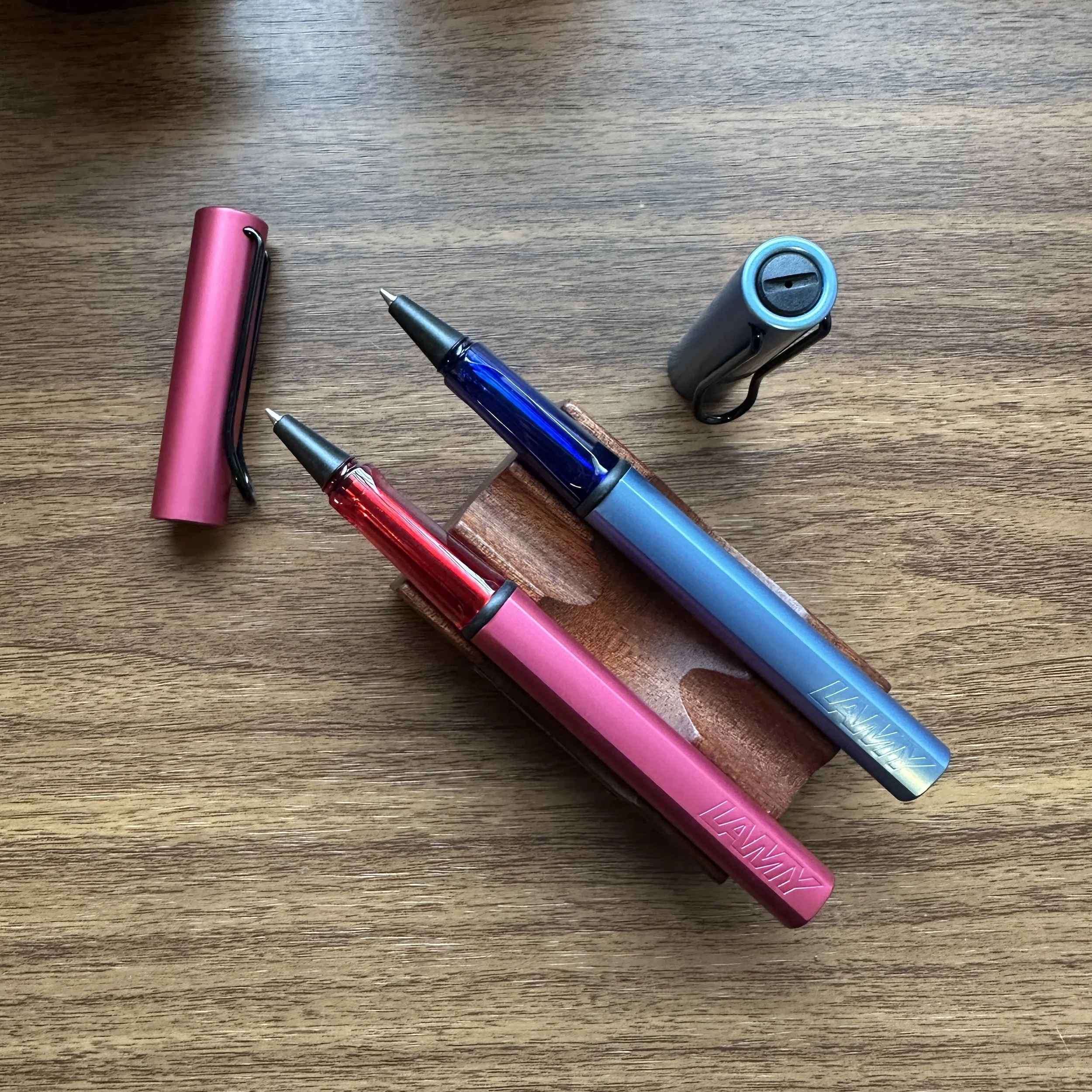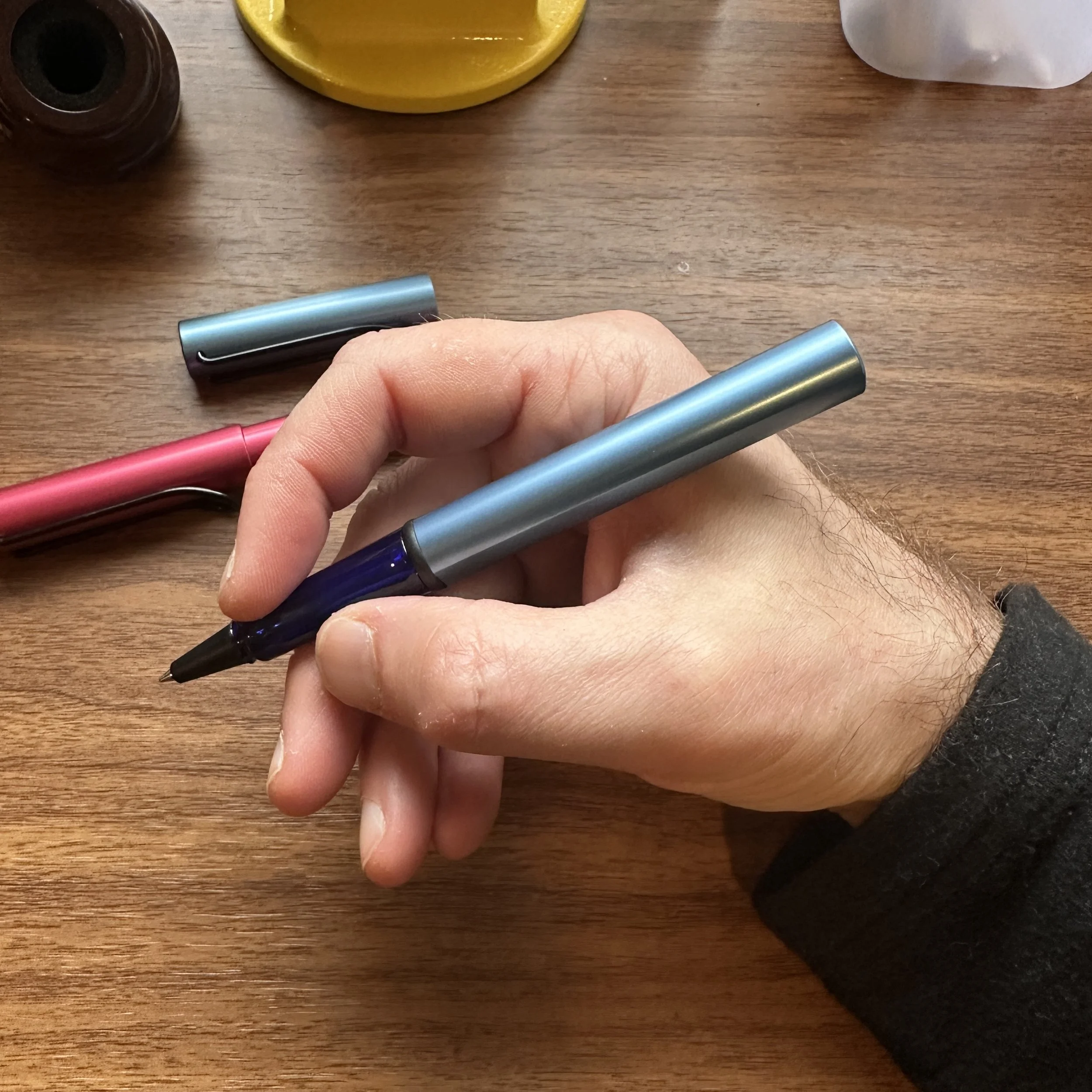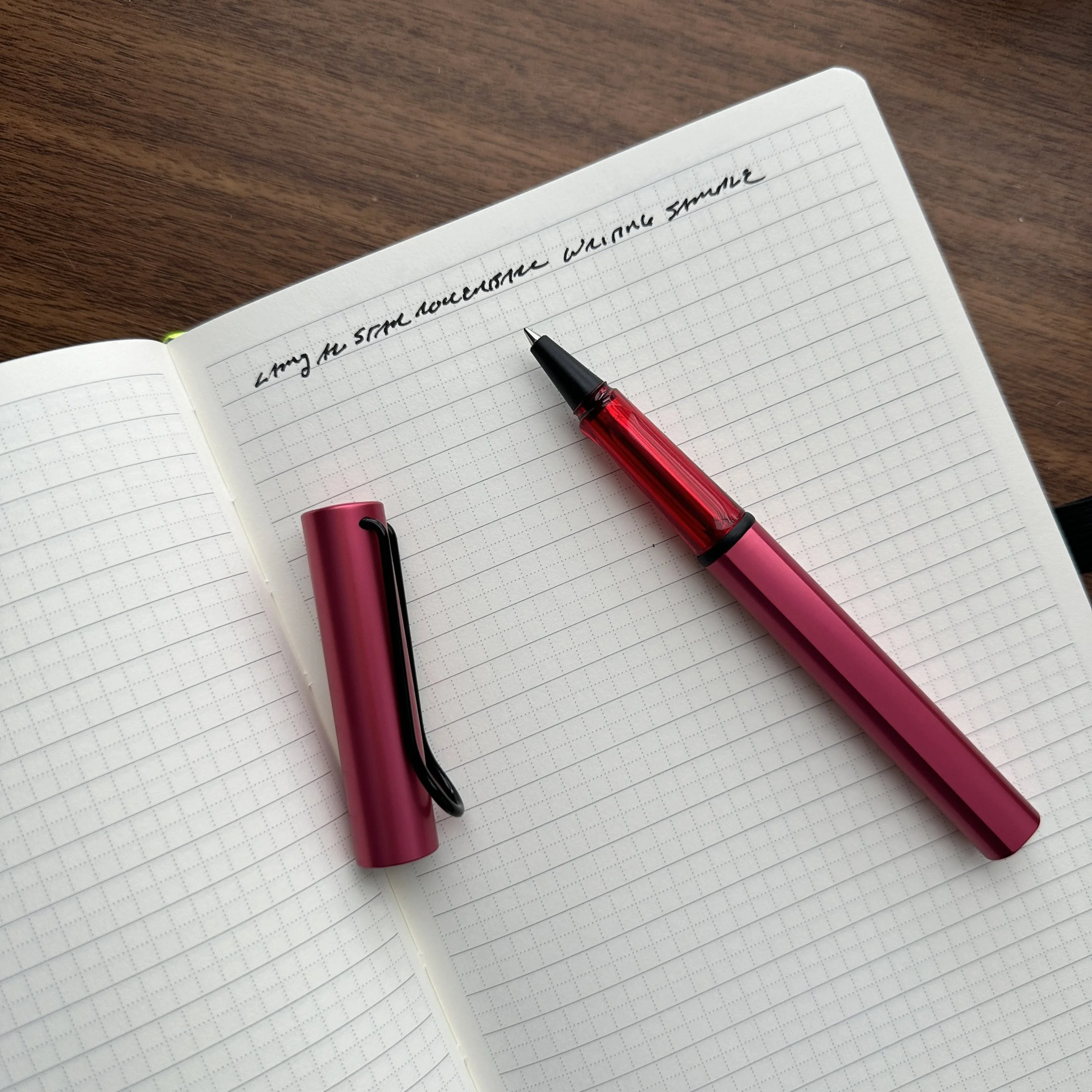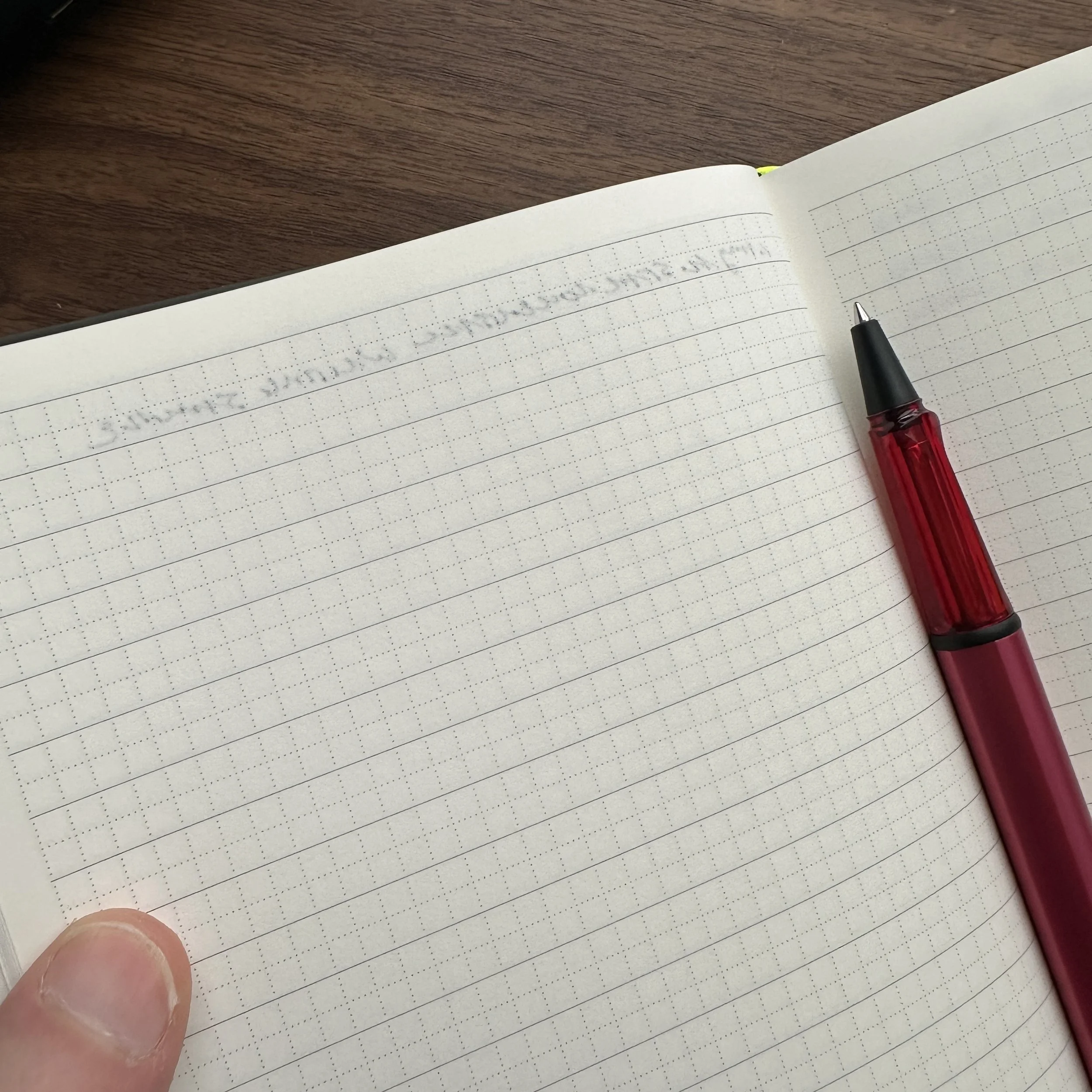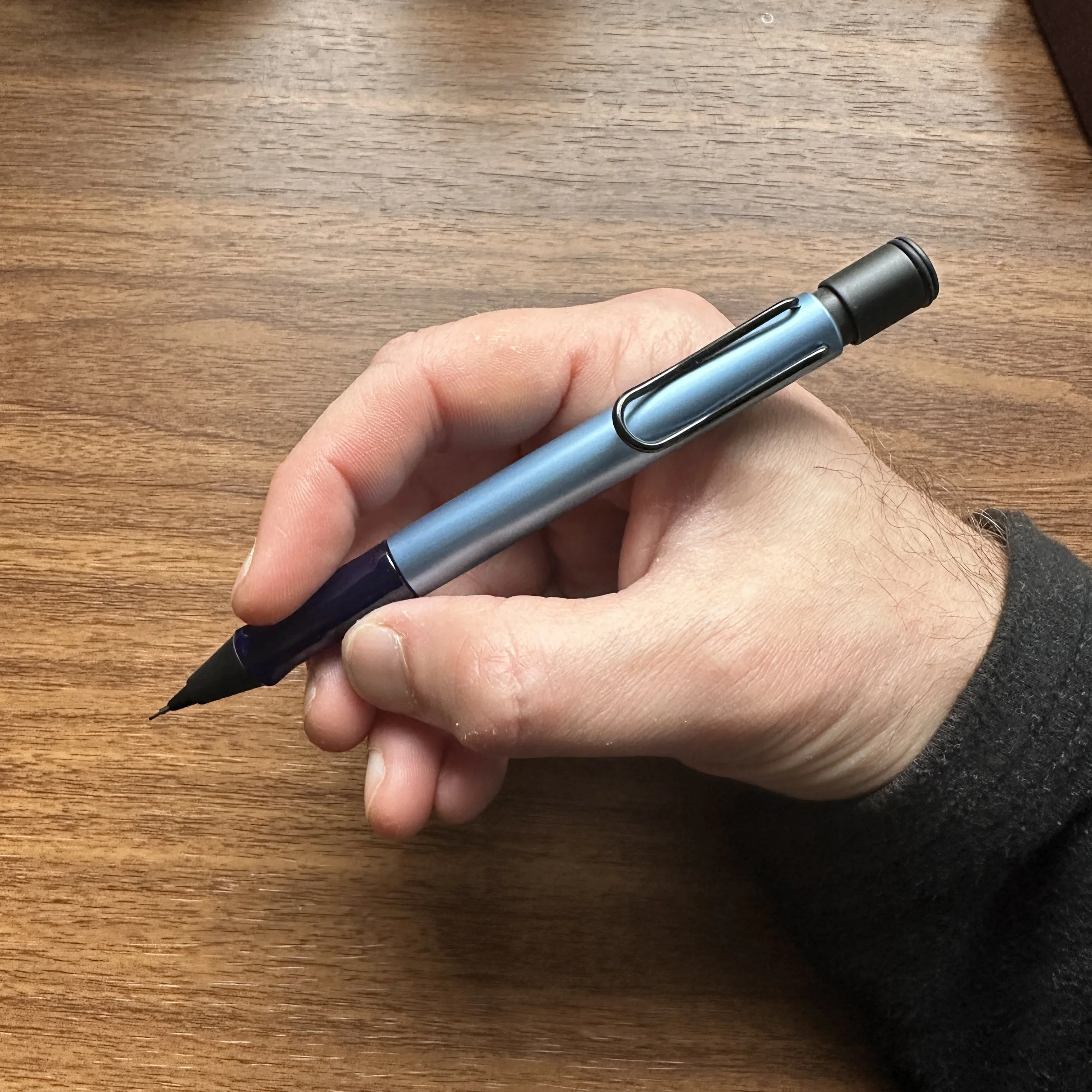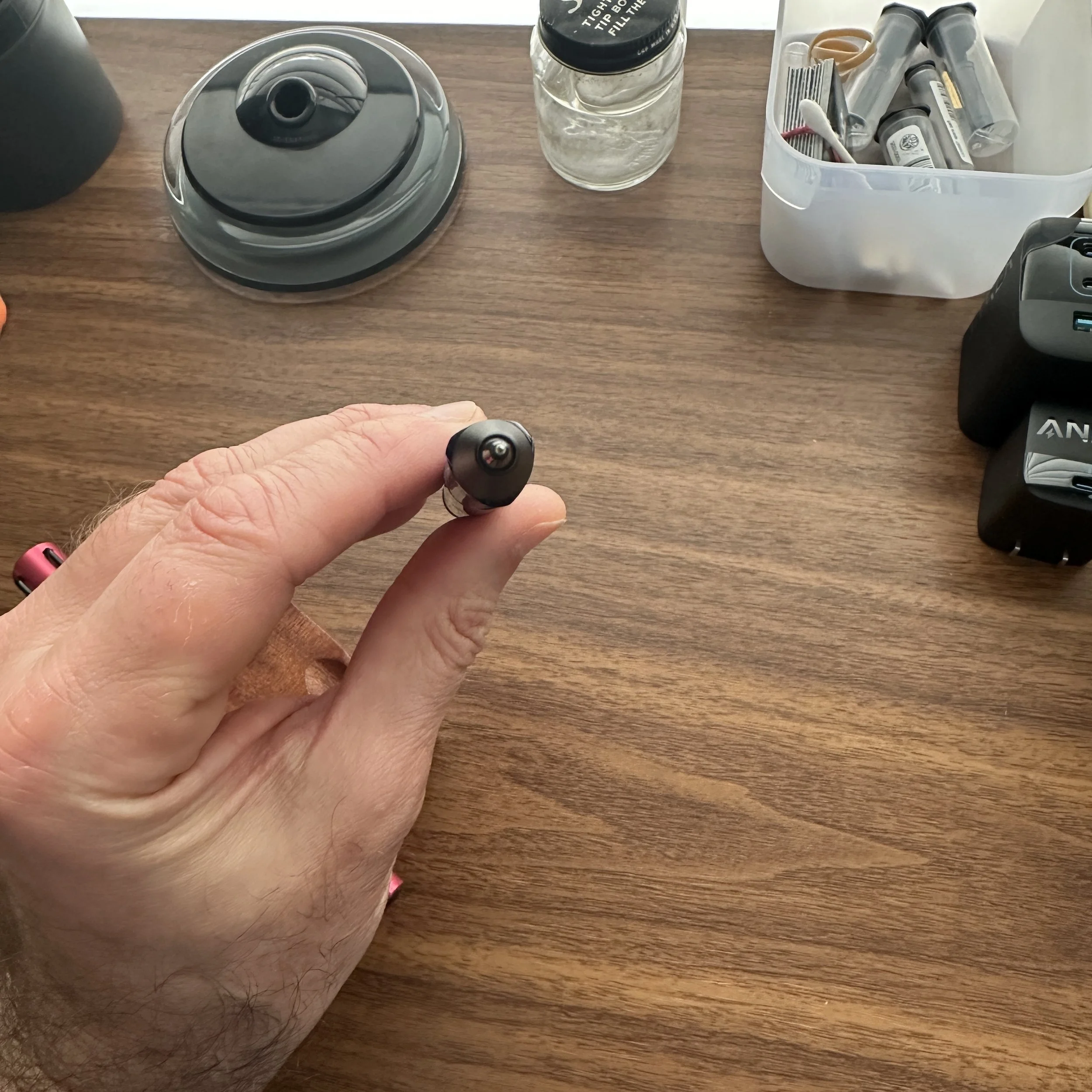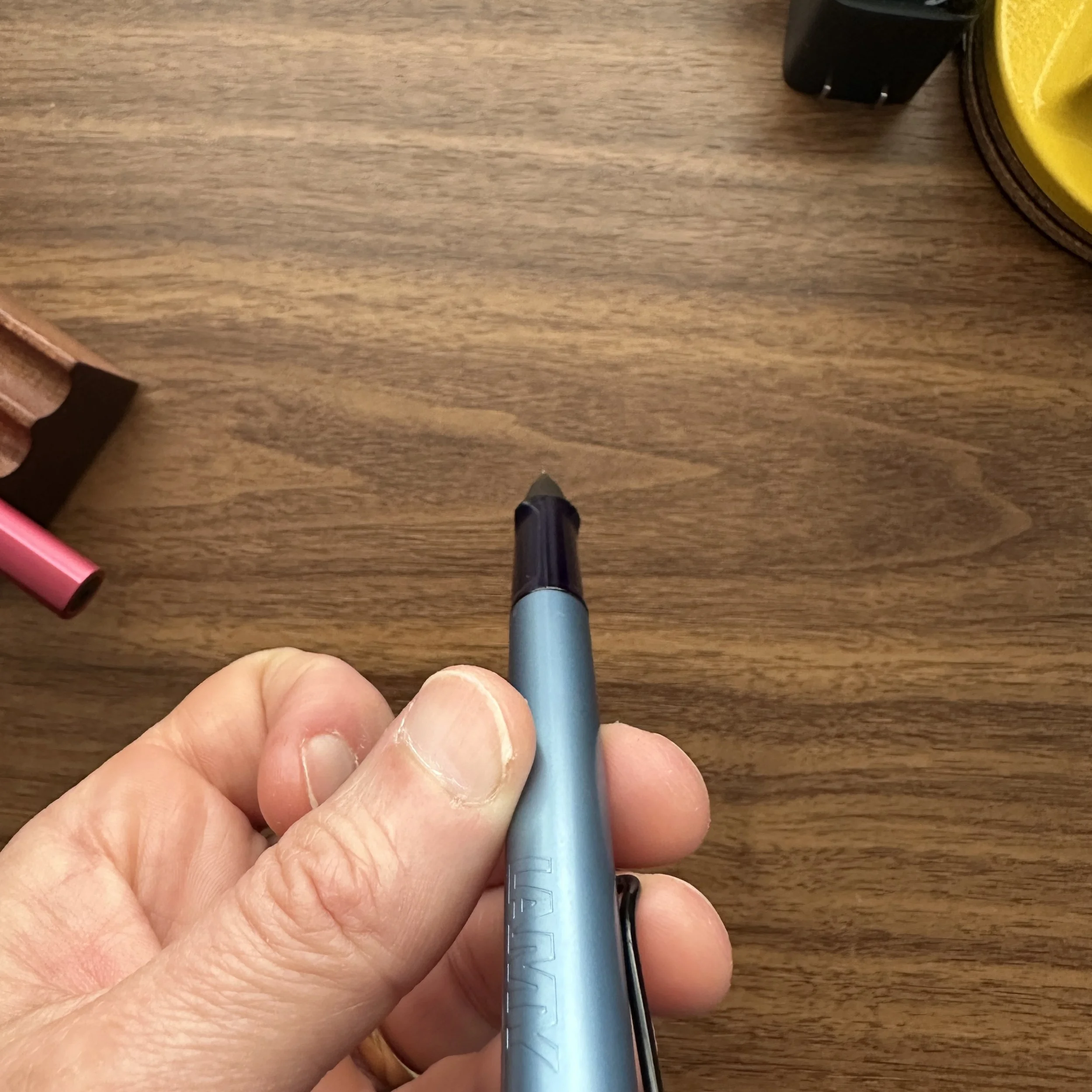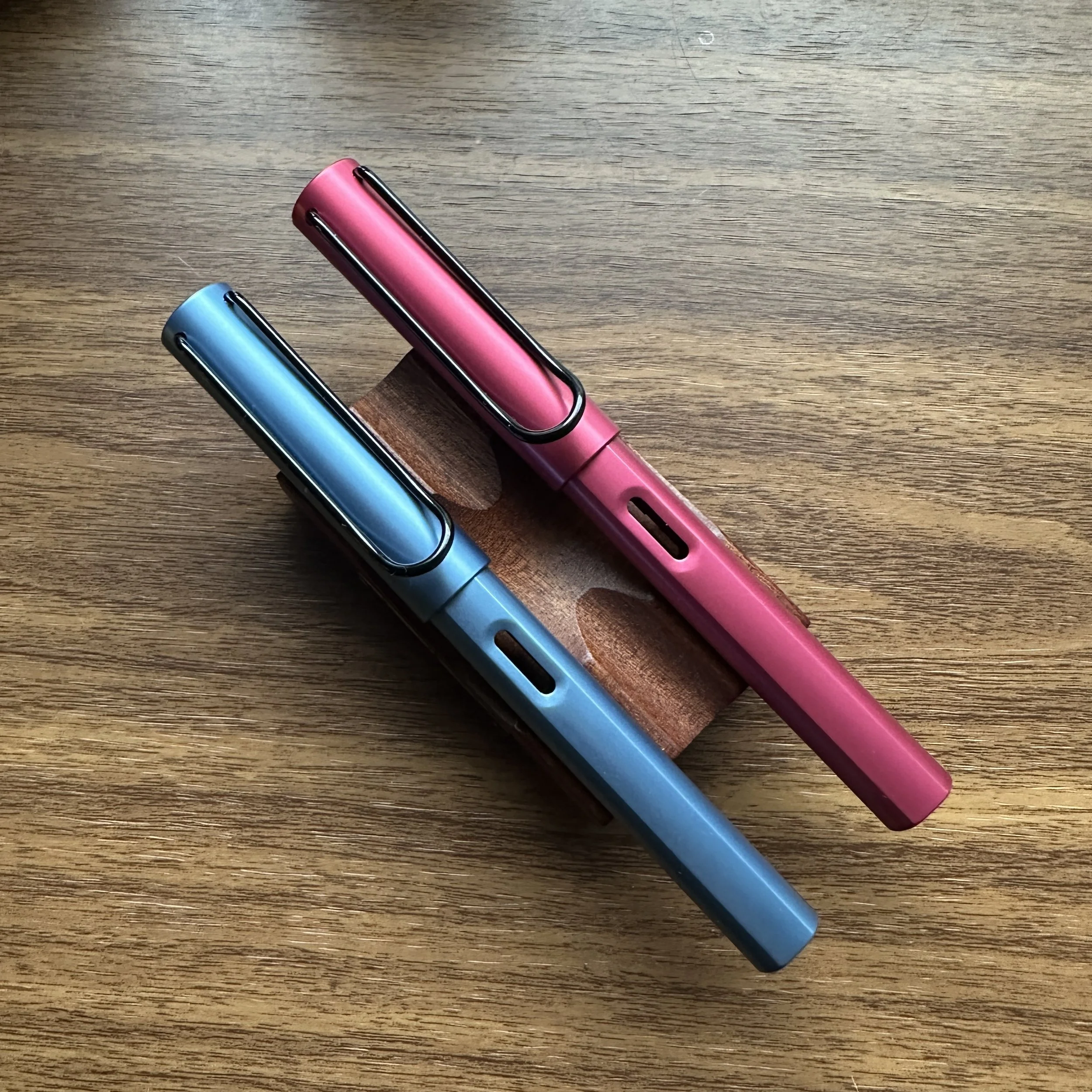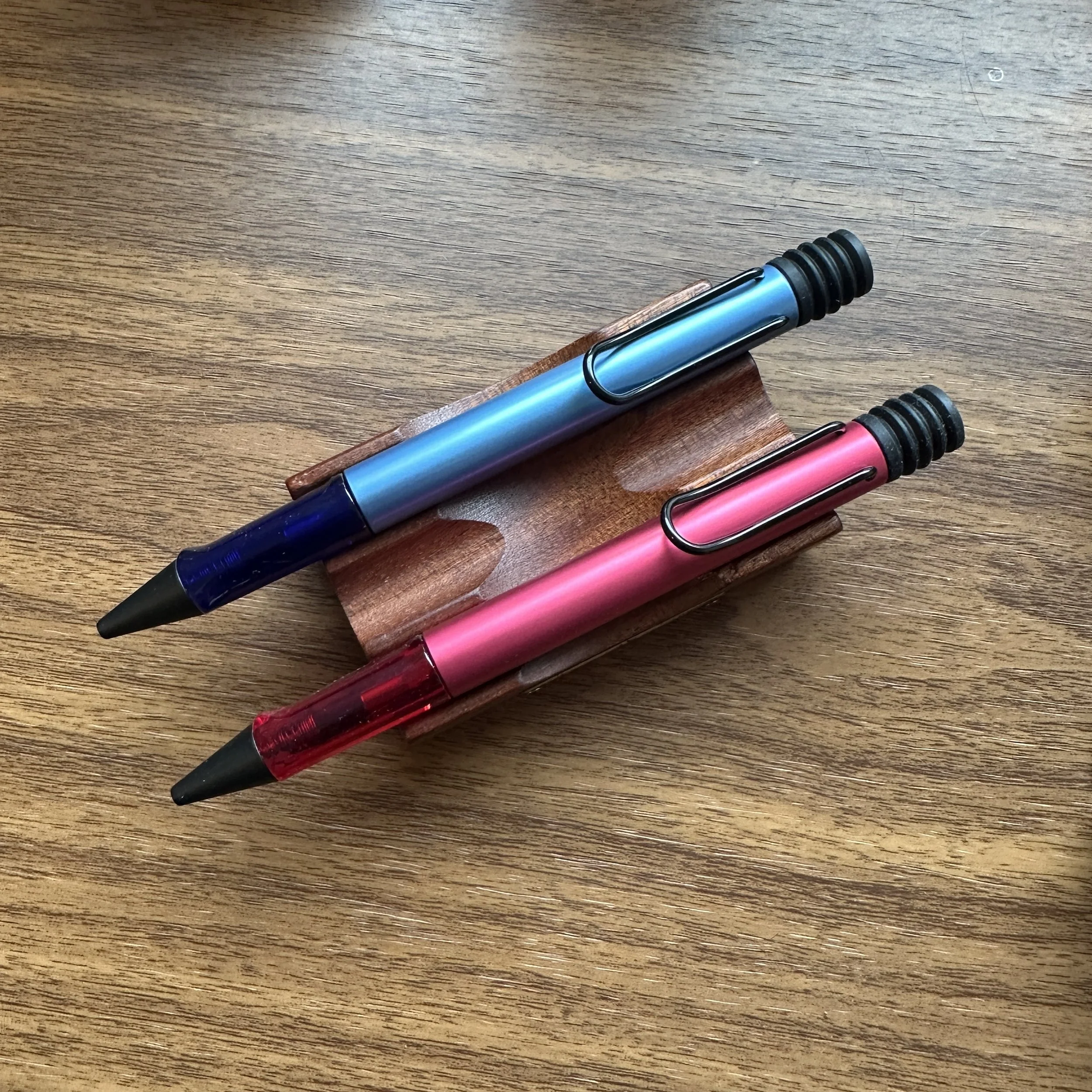I've not formally reviewed a TWSBI since the release of the TWSBI "Kai" special edition piston filler last year, and it's been longer since I've reviewed a TWSBI ECO, so in light of TWSBI's recent blitz of new pens in a broad assortment of different color and trim combinations, this one's overdue. While I won't rehash much of what I've already written on the ECO in terms of origin, construction, design, etc. (you can read that here), I will say that it's one of my top pen recommendations in the "under $50" category.
The TWSBI ECO Caffé Bronze (left) with Indigo Blue + Bronze (right)
The TWSBI ECO serves as one of the premier value fountain pens on the market. Priced as low as $32.99 for a pen with the standard steel trim, the ECO features a reliable piston filling system and generally appeals to a wide range of enthusiasts, from beginners looking for their first pen to experienced users who want a reliable everyday writer that doesn't break the bank. Over the past few years, TWSBI has gradually introduced variations into the ECO lineup, including the "ECO-T" (triangular section), the ECO Rose Gold (with rose gold trim), and, as shown here, the ECO “BRZ” (with bronze trim). While the rose gold and bronze trims raise the price of the ECO to $49.99, even this still amazes me somewhat as many manufacturers would have tried to price the standard ECO at $50.
Is “ECO BRZ” a thing now? I like it. Now I need to go matching Subaru shopping.
The pen I’m looking at today features the new bronze-toned trim. The TWSBI ECO "Caffé Bronze", as you might expect from the name, draws on coffee as its inspiration. Featuring the same faceted hexagonal cap and round barrel as the standard ECO fountain pen, TWSBI began experimenting with bronze last year, releasing it for the first time with the ECO "Indigo Blue + Bronze" model. It's proven wildly popular, especially among those looking for something similar to rose gold but perhaps with a touch less red.
Personally, the combination of light coffee-colored acrylic and bronze trim screams for J. Herbin “Cafe des Iles” ink.
While I enjoy rose gold trim on pens, the bronze adds a new dimension due to its deeper tone. When you combine this trim with a more muted color acrylic, like the light "caffé brown" acrylic used here, you get a pen that's perfectly tailored to my own preferences. For so many years, pen makers and manufacturers have catered to the segment of the community that wants bright, wild acrylics, but what about those of us looking for something a touch demure? TWSBI has done a good job of mixing in crazy colors (see the "Glow Green" and "Glow Purple", which actually glow in the dark) with the more subdued (see the Creme and Rose Gold, Dark Sapphire). I hope this trend continues, and that other manufacturers follow suit.
Overall Thoughts on the TWSBI ECO and Where to Buy
The ECO has become my default everyday TWSBI because (1) they're relatively inexpensive, and I have a handful of these pens, so don't necessarily need to worry about damage while carrying them around with me or leaving them at my office; (2) the nib writes a reliably wet line; and (3) I can post the cap, which attaches securely to the end of the pen via an o-ring. I can’t wait to see what else TWSBI has coming, as I've enjoyed most of the new additions even if they sometimes make it hard to keep up.
You can see a trend here: The TWSBI ECO Caffé Bronze (center) with my Kaweco Art Sport in Terrazzo (right) and my recently acquired Good Made Better pocket pen.
I can’t say whether these new TWSBI releases are intended to be permanent additions to the lineup or special editions that will eventually be retired - to my knowledge, TWSBI hasn’t specified. In the past, TWSBI has typically released a color and kept it around for a year or so, replacing it with something else once interest wanes. That said, many of the new releases from 2023 and even 2022 are still available to retailers, as I've had no problem restocking so I expect there’s no immediate danger of the 2024 releases disappearing.
If you would like to support T.G.S. directly, you can purchase the TWSBI ECO Caffé Bronze from our own shop, along with most other TWSBI products including pens, mechanical pencils, and inks. As I mentioned above, the specific pen shown here is priced at $49.99. All TWSBI ECO fountain pens are piston fillers, and take bottled ink only, so plan accordingly!
The Gentleman Stationer is supported entirely by purchases from the T.G.S. Curated Shop and pledges via the T.G.S. Patreon Program. We greatly appreciate your support!

